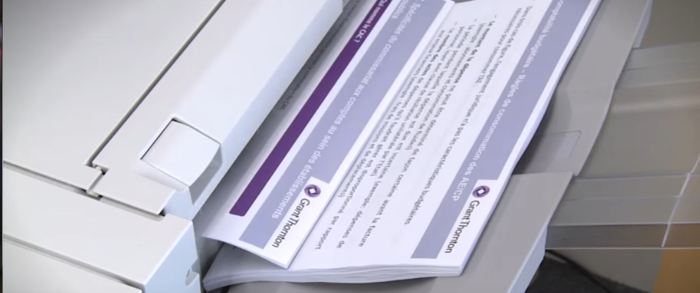Guest post by Gary Tammaro, Senior Vice President, Global Delivery, Xerox Managed Document Services

At some point, your enterprise may need to consider a vendor for Managed Print Services. Maybe it’s your current provider or someone new, or maybe you’re new to MPS yourself. The quality of your managed services experience depends on the infrastructure that comes with it. Even a basic understanding of the underlying delivery infrastructure will benefit you as a better foundation for evaluating MPS providers. How does the vendor deliver services behind the scenes?
Devices Are More Intelligent and Useful
At the enterprise level, service delivery goes beyond basic very fast. MPS infrastructure has never been more user-focused and intelligent than it is today. Devices have become more like workplace assistants, and the design, connectivity and platforms behind today’s multifunctional printers and other infrastructure have set new standards.
Why does it matter? There are many good reasons to keep the device fleet running:
- System downtime hurts productivity.
- Uncontrolled printing and scanning impact costs and create security risks.
- Sustainability goals get more support.
- Digital gateway to business workflow and systems stays open.
Tools for the Job
MPS infrastructure requires an integrated and largely automated tool suite for device, supplies and services management. Expect your vendor to offer a baseline of:
- Third-party service management and integration
- Help desk management system
- Option to integrate with client-based ticketing systems
- Supply scorecard, monitoring and management
- Transaction logging and auditing
- Escalation logging and resolution
What about hosting for data and tools? A good solution is often centrally hosted with a web-based user interface. Sometimes MPS infrastructure integrates tools with the cloud.
Need Service on a Global Scale?
Are you global or a very large regional organization? Can the MPS provider extend the service infrastructure consistently and globally? (A few do, but that has its own set of criteria on top of the ones in this post.) If a provider says they can do out-of-the-box integration with your systems, be prepared to dig deeper. Rest assured this won’t be an out-of-the-box integration if it involves a complex, global engagement.
Security and Standards
Using outside technologies and services sometimes make IT and security management apprehensive, but collaboration must happen. Device, data and document communications should be secure and encrypted, with controlled physical access such as biometric identification. When MPS providers follow the highest security measures and standards for device data collection and communications, security professionals can relax a little.
Portal Views of Your Device Fleet
Your service provider manages the overall fleet, but your team may also want visibility from time to time. How does the provider give you an operational view of your imaging systems? The portal is a convenient window to view information by device and services across the fleet. It’s a hub for monitoring supplies, incident management and data collection. Service, supplies and usage data help your provider optimize your print environment. Your MPS partner should also use data analysis to improve business results, and optimize workflows, documents and user behavior.
Capabilities to expect in an MPS portal:
- Visual rendering to eliminate guesswork about device locations and status
- Devices preconfigured to your printing policies
- Links to reporting systems
- Submit an incident or supply order and monitor ticket progress
- Access incident submissions, supplies orders, printer locations, driver installation and other services
- Get manuals and other information for deployed devices
Dashboards make viewing and learning easier for you and your provider, which in turn contributes to better service, lower costs, consistent uptime and ongoing improvement. That’s reason enough to want to understand how the service team accesses and manages your fleet.
Reporting Drives Optimization
Reporting is a critical part of your managed services engagement. It’s the job of infrastructure tools to capture data and generate reports about your networked devices for:
- Device uptime and usage tracking
- Supplies consumption and management
- SLA reporting
- Meter and page count reporting
Operational service reporting from your vendor should include both standardized and customized reports exportable in a variety of formats. You can also use reports to share results with your management team.
The infrastructure is there every day in the background, smartly going about its businesses. And after you select the right MPS partner for your enterprise, you probably won’t have to think about the infrastructure much at all.



